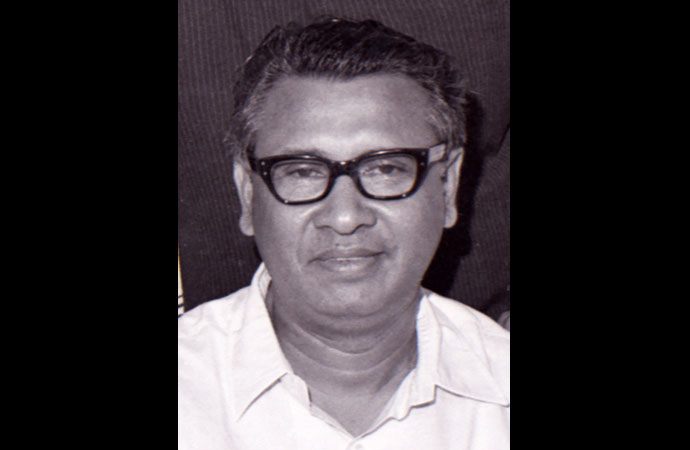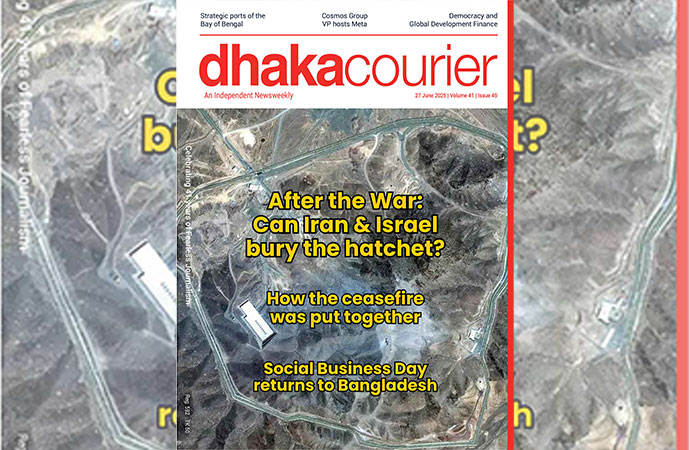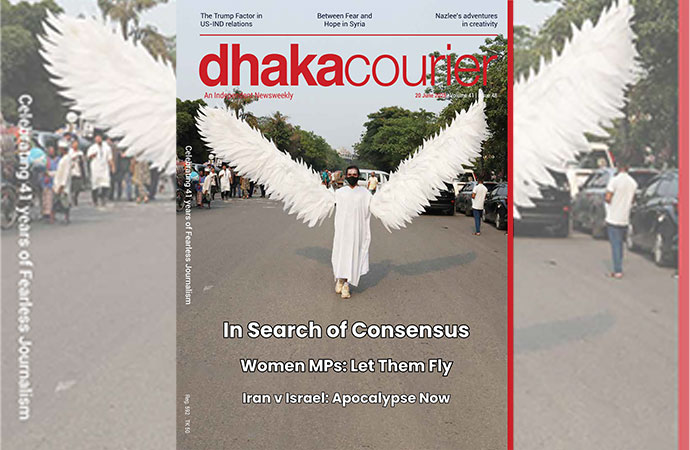Society

A new film follows Shushan as she makes the journey to return home to Nagorno-Karabakh, whose fate is increasingly in the balance. Photo: Collected
The Dream of Karabakh, about a woman’s attachment to her village, is rooted in personal memories that cannot be moved, unlike borders
I first met Shushan in February 2021. The mother of five was living in Landjazat village, near Armenia's barbed-wire border with Turkey. The house, which belonged to some of Shushan's acquaintances who worked in Russia, had become her family's temporary home after they were forced to flee Nagorno-Karabakh as the Second Karabakh War raged.
On the morning of 27 September 2020, Shushan and her family woke to the sound of explosions. In the days that followed, at least 3,700 Armenian and Karabakh soldiers, and nearly 200 civilians were killed in an offensive by Azerbaijani troops to take back territory in Nagorno-Karabakh.
Fighting ceased on 10 November 2020, when an agreement was signed by Armenia's prime minister, Nikol Pashinyan, Azerbaijan's president, Ilham Aliyev and Russia's Vladimir Putin. As a consequence, Nagorno-Karabakh lost 70% of the territory that its de-facto administration had controlled since 1994, displacing nearly 70,000 Armenians.
This is the second mass displacement in the territory in a little over two decades. Disputed between Armenia and Azerbaijan, it has seen years of war. By 1994, Armenian forces had taken full control of Nagorno-Karabakh, and full or partial control of seven other Azerbaijani regions bordering the territory. Though all of these areas were still internationally recognised as part of Azerbaijan, more than half a million Azerbaijani civilians were forcibly displaced from their homes.
I got in touch with Shushan after I started researching the story of her village. Before the 2020 war, Charektar village had 48 families or roughly 270 residents. Charektar de jure lies in the Shahumyan province of the breakaway Republic of Artsakh or the Nagorno-Karabakh Republic, but de facto it is in Azerbaijan's Kalbajar district. I became interested in Charektar's story because it had practically been burned to the ground even though no fighting took place there during the 2020 war.
As Armenia's prime minister Pashinyan announced the Moscow-brokered ceasefire on 10 November and people stormed parliament in protest, Charektar's residents were told their village was part of the territories to be transferred to Azerbaijan. Many people had already fled the region for Armenia and news of the impending transfer reportedly caused those who remained in Charektar and the neighbouring villages to set fire to their homes, which was widely covered by many Western media outlets.
But then, a few days later, the residents of Charektar were told their village would remain under Armenian control, just a few hundred metres away from military checkpoints and the newly-drawn border with Azerbaijan. The lack of reliable information and clear messaging from the authorities meant that Charektar's residents had tragically set fire to their own village.
When I met Shushan, I expected her to be grieving the loss of her home. But it quickly became clear that was not all and she was grieving a double loss. Shushan had lost her husband in a car accident six months before the autumn 2020 conflict.
Shushan had met her late husband in the mid-2000s in Dadivank, a village in the foothills of a mediaeval monastery in Nagorno-Karabakh. They fell in love, quickly decided to get married and when Shushan's parents opposed the relationship, they eloped. Eventually, the couple moved to Charektar, where they slowly built a house with their own hands. Their new home had a panoramic view of the valley, a yard where Shushan would drink coffee with her neighbours , and an ivy-covered gazebo where the couple would relax after work.
Shushan's eyes lit up as she told me about the life she had shared with her husband, one that was profoundly tied to their house and the village. It was then that I realised her story wasn't about war but love. To her, the war was tragic most of all because it took away the place where memories of her husband resided - the house they had built together and shared.
That's how my film, The Dream of Karabakh, materialised. I followed Shushan over the course of three months, as she tried to adapt to her new life as a refugee in Armenia. Four of her children were living with her, while the eldest remained in Stepanakert, capital of Nagorno-Karabakh, studying to become a doctor.
In the months we spent together, Shushan reminisced a lot, as she grappled with her grief and life in a foreign place. In the film we see her greatly moved and almost in tears while making her husband's favourite dish for the first time since he passed away. She also complains about the herbs needed to make the dish. Native to Nagorno-Karabakh, they were so much better back home than in Armenia.
Shushan's relatives and neighbours, who had also fled Charektar and are now scattered across Armenia, share the feeling of being uprooted. As her younger sister eloquently explains in the film: "This place is fine, but it's not our home".
But when Shushan floats the idea of returning to Charektar, the others quickly shut her down. "When you open the door, the Azerbaijanis are going to be 300 metres away," says her sister. "How are you going to live like that?" Shushan doesn't say anything in reply.
Then comes a turning point with Shushan revealing that her husband often appears in her dreams and asks her to come back home, to the house they built together. He promises her that they'd be safe there, he would protect them. Eventually, the dreams push Shushan to make the decision to return.
In April 2021, Shushan made the perilous journey back to Charektar. What would have normally taken a few hours via the northern road that connected Armenia's Gegharkunik region and Kalbajar district, turned into nearly a whole day of travel. From southern Armenia, she was able to reach Nagorno-Karabakh via the Lachin corridor, the only road connecting the Republic of Armenia and Nagorno-Karabakh. Eventually, Shushan did make it back home.
I, on the other hand, was not able to reach Charektar. By early 2021, foreign passport holders were denied access to Nagorno-Karabakh from Armenia. Twice, I was turned away by Russian peacekeepers at the Lachin corridor, despite having a press pass and visa. This meant I could not travel with Shushan back to her village. However, I worked with Armenian filmmaker Greta Harutunyan to film Shushan's return.
In her footage, we see Shushan going home to an eerily quiet Charektar, except for the occasional column of Russian peacekeepers that drives through to the makeshift border checkpoint manned by Armenian and Azerbaijani soldiers. The school that Shushan's children attended was burned down. Most of the houses have been burned and looted, including Shushan's.
I will never forget the scene in which Shushan stands in her garden looking down the hillat the destruction. She says: "It's going to be very difficult to live here without him. But this is the village he loved."
It was Shushan's courage and her decision, moved by love, to challenge her family and return to the village that inspired this film.
I have often found myself wondering if I were simplifying the situation or even rendering it banal by framing The Dream of Karabakh as a love story. But in fact, it was my initial assumption that the war was the centre of Shushan's story that was an oversimplification. Shushan's story challenges narratives of belonging as merely rooted in nationalism. Her attachment to Charektar is rooted in personal memories that cannot be moved, unlike borders.
Unfortunately, since April 2021, when Shushan and her children moved back to Nagorno-Karabakh, the situation has progressively worsened. Fighting often erupts along the border. In March 2022, during a very cold period of late winter, the roughly 100,000 residents of Karabakh were left without natural gas, hot water or food. The price of everyday goods in supermarkets is higher and there is a shortage of bread and sugar. The electricity is switched off frequently.
I got in touch with Shushan in the spring of 2022, and she said that she hadn't had electricity for days, inflation was high and life had become very difficult.
The situation only worsened towards the end of 2022. The Lachin corridor has been blocked since mid-December by Azerbaijani eco-activists seemingly backed by their government. On 25 March, Azerbaijani forces cut access to a dirt road that had been used to bypass the blockade, claiming that it had been used to smuggle weapons - a claim that the authorities in Nagorno-Karabakh denied.
It has now been more than a 100 days since the residents of Nagorno-Karabakh, including Shushan and her family, have lived under a blockade. There are shortages of food, fuel and medicine. Amnesty International has said the blockade is disproportionately affecting women and children. There are rumours that conflict will soon erupt again. And in the meantime, Shushan and her family, as well as hundreds of other Armenians in Nagorno-Karabakh, are deprived of their rights, in the midst of a worsening humanitarian crisis they cannot escape. Shushan's dream of Karabakh seems more unattainable than ever.
Even so, it is Shushan's courage and resilience in returning to Nagorno-Karabakh that this film seeks to honour. The Dream of Karabakh is a story about love and belonging, powerful forces that drive Armenians in Nagorno-Karabakh but which are often silenced by war narratives.
From openDemocracy

























Leave a Comment
Recent Posts
Wrestling legend Hulk Hogan di ...
Hulk Hogan, the iconic mustachioed showman who helped transform profes ...
‘Punoray: shaping the future, ...
In a compelling initiative that seeks to bridge art, craft, and the st ...
Rangamati mourns death of Ukya Ching Marma in Milest ..
Uttara plane crash: A guardian’s last act of love
BIMSTEC for addressing security challenges that hind ..
The longest week yet, in Bangladesh 2.0